Q1: At what age do children start learning multiplication?
Most students are introduced to multiplication in Grade 2 (around ages 7–8). They start with the concept of “repeated addition” before moving on to memorizing multiplication facts. They are often introduced to multiplication through arrays or using a number line.
For example, in these worksheets:
Multiply with arrays worksheets
Students color in squares to solve multiplication questions in these worksheets.
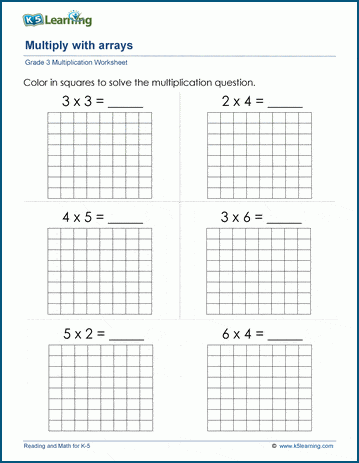
Multiply using a number line
Students use skip counting to solve multiplication questions.
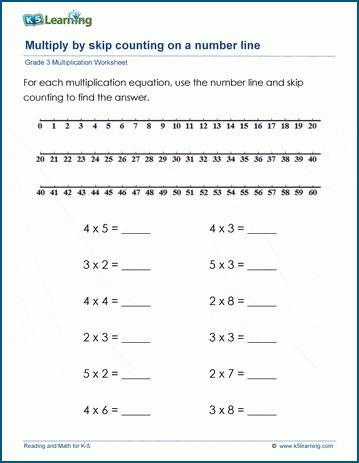
Q2: Why is learning multiplication important?
Multiplication is a building block for more advanced math topics like division, fractions, algebra, and problem-solving. Mastering multiplication early makes higher-level math much easier later on.
Q3: Which multiplication facts should my child learn first?
Start with easier patterns like 0, 1, 2, 5, and 10. Then move on to 3, 4, 6, 7, 8, and 9.
Q4: What are the easiest ways to practice multiplication at home?
Use flashcards: Practice 5–10 minutes a day.
Play games: Board games, card games, or online math games like Prodigy or Multiplication.com.
Skip counting: Count by 2s, 5s, 10s out loud while walking or clapping.
Real-life examples: Double a recipe, calculate the total number of items in a set of boxes, etc.
Q5: How long does it take to learn the times tables?
It varies, but with daily short practice, many children can master most facts (up to 12 × 12) within 2–3 months.
Q6: What’s the difference between memorizing facts and understanding multiplication?
Memorizing facts helps with speed, but true mastery comes from understanding multiplication as groups of equal size. For example, 4 × 3 means 4 groups of 3 objects.
Q7: How can I help if my child is struggling?
Break down practice into small steps (focus on one table at a time).
Use visual aids like arrays or multiplication charts.
Celebrate progress—praise effort, not just correct answers.
Q8: How can I keep my child motivated to practice multiplication?
Track progress on a chart or app.
Set small, achievable goals.
Use rewards for effort, such as stickers or extra playtime.
Q9: Are multiplication charts still useful in 2025?
Yes—charts help children see patterns, such as symmetry and skip-counting sequences, and they serve as a quick reference while learning.
Multiplication charts practice
These multiplication charts worksheets with hints included are a good place to start.
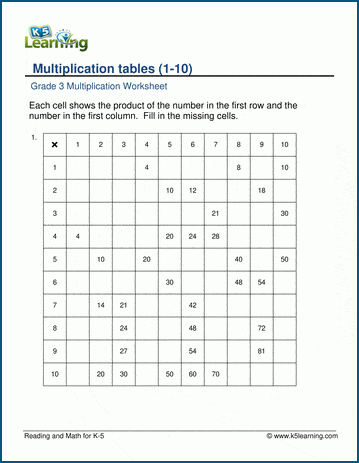
Multiplication tables practice
On our grade 3 multiplication page we have a set of practice sheets for students to reinforce their multiplication facts.
Tables 2 – 5 practice
These worksheets cover the 2 to 5 multiplication tables. The questions are random across the worksheets.
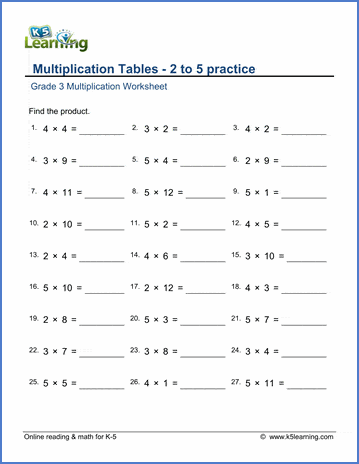
Tables 6 – 9 worksheets
Next, students tackle the 6 to 9 times tables.
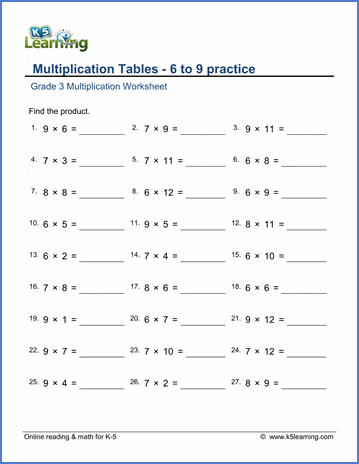
Tables 2 – 10 practice
These worksheets cover a wider range of the 2 to 10 multiplication tables.
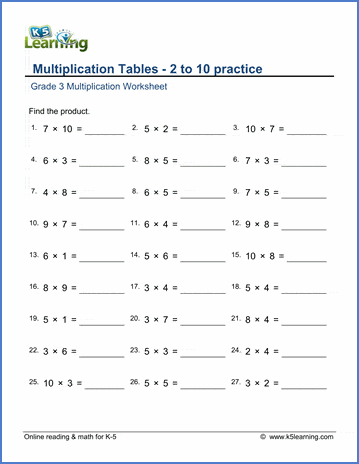
Tables 2 – 12 practice
Finally, we present the full 2 to 12 times tables to students for practice.


